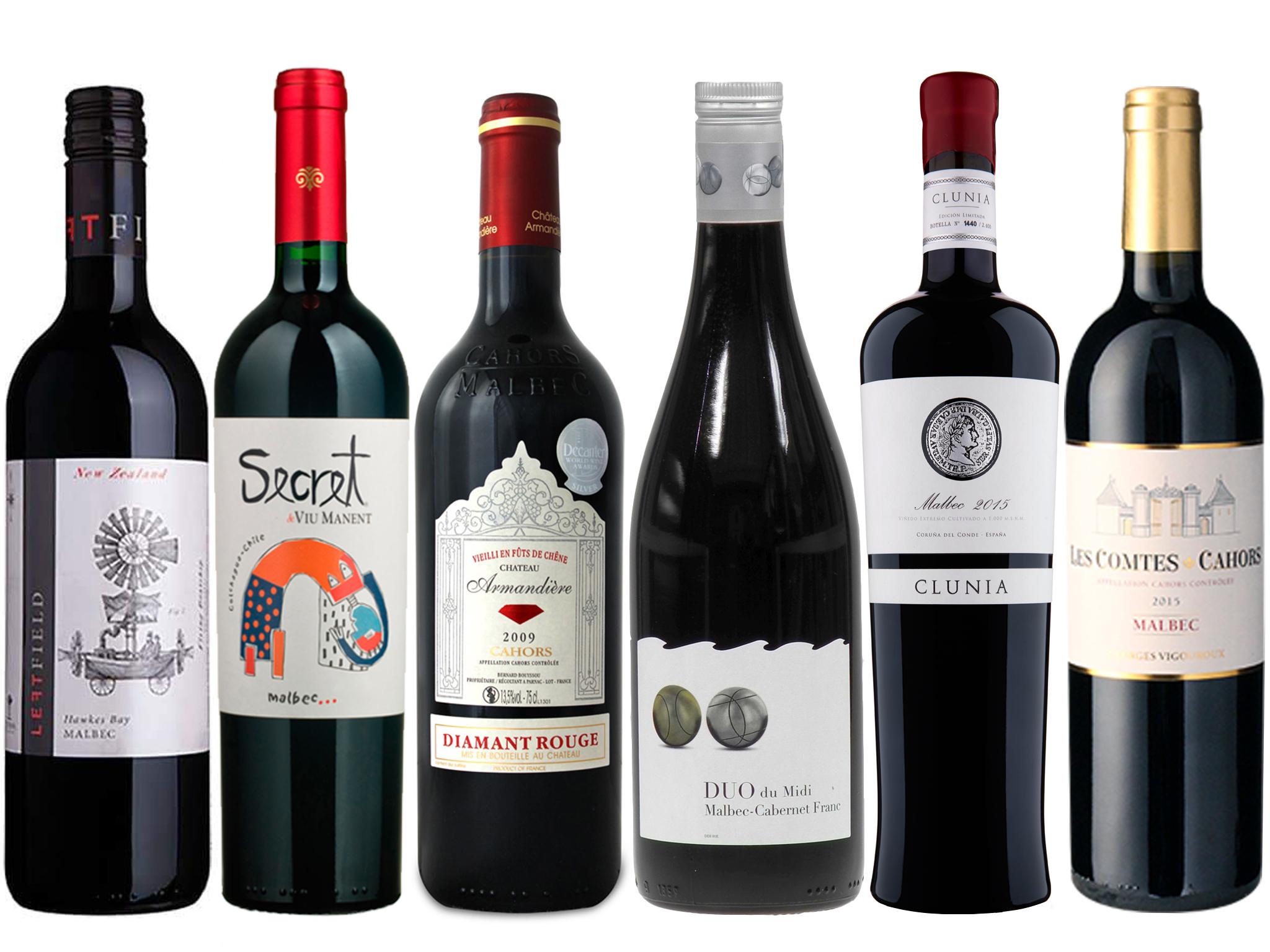The Independent's journalism is supported by our readers. When you purchase through links on our site, we may earn commission.
Wines of the week: Malbecs from around the world
It’s come a long way, malbec, from bit-part player in the Bordeaux blends to global colossus. Terry Kirby pops his cork

Your support helps us to tell the story
From reproductive rights to climate change to Big Tech, The Independent is on the ground when the story is developing. Whether it's investigating the financials of Elon Musk's pro-Trump PAC or producing our latest documentary, 'The A Word', which shines a light on the American women fighting for reproductive rights, we know how important it is to parse out the facts from the messaging.
At such a critical moment in US history, we need reporters on the ground. Your donation allows us to keep sending journalists to speak to both sides of the story.
The Independent is trusted by Americans across the entire political spectrum. And unlike many other quality news outlets, we choose not to lock Americans out of our reporting and analysis with paywalls. We believe quality journalism should be available to everyone, paid for by those who can afford it.
Your support makes all the difference.The rise of malbec has been phenomenal. Its popularity is largely due to the Argentine approach to the grape, which has transformed it from its origins in France – where it was either a component in Bordeaux blends or producing quite rustic, tannic wines in the south-west – into an approachable, plush red with an appealing freshness from being mostly grown at high altitudes.
This column will return to Argentine malbec in the spring, but, partially fuelled by the success of the Argentines, malbec is now also produced in several other parts of the world, each with their own particular take on the grape.
Ironically, very little is now made in its original home in Bordeaux, the grape having been largely wiped out by severe frosts in 1956.
But it survived the same frost and continues thrive in the south-west in areas like Cahors, where the slightly warmer climate results in seriously inky, weighty wines that need plenty of time to age and breath: try the approachable, smoother, Chateau Armandiere Diamant Rouge 2011 (£21 winesbychix.co.uk) full of black fruits, chocolate and coffee flavours or the slightly more affordable Les Comtes Cahors Malbec 2015 (£11.99 Majestic.co.uk), which is blended by Tannat and Merlot, to get an idea of what the original malbec was all about. Both are great winter warmers and should be matched, as they are in south-west France, with roast duck or cassoulet, or, as with most Malbecs, with steak or other roasted or grilled red meats.
Malbec also crops up in the Languedoc, such as this even more affordable, brilliantly juicy little guzzler Duo Du Midi 2016 (£6.25 winesociety.com). Blended with enlivening cabernet franc, it’s an absolutely ideal party wine or for that midweek pizza or pasta.
In many ways, Argentine malbec can be a rival to Spanish rioja for consumers looking for dependable, user-friendly red wines, although it lacks the latter’s great ageing potential. But now Spain is striking back with the Clunia Malbec 2015 (£24.99 houseoftownend.com) made by the esteemed rioja producer Rioja Vega from grapes grown at around 1,000m near Burgos in the Castilla y Leon region in northern Spain: seriously rich and powerful, a big and bold wine that is is drinkable now, but will soften and improve with a bit of age. One for your finest cut of steak.
Further afield, malbec is also now in small quantities in New Zealand, where the Te Awa Collection Left Field Malbec (£14.99 nzhouseofwine.co.uk; £18.90 thenewzealandcellar.co.uk) is made from grapes grown much closer to sea level on the renowned Gimblet Gravels area in the Hawkes Bay region, which impart their own minerality: a wine of both richness and freshness, with intense black fruit flavours, a great alternative to Mendoza’s finest.
Finally, back to South America and to Chile, which has also planted Malbec at high altitude with considerable success. If you want to try the Chilean take on the grape, seek out the Secret de Viu Manent Malbec 2015 (£11.50 oddbins.com) from the Colchagua valley: succulent, juicy and with toothsome, minty black fruits.
Join our commenting forum
Join thought-provoking conversations, follow other Independent readers and see their replies
Comments